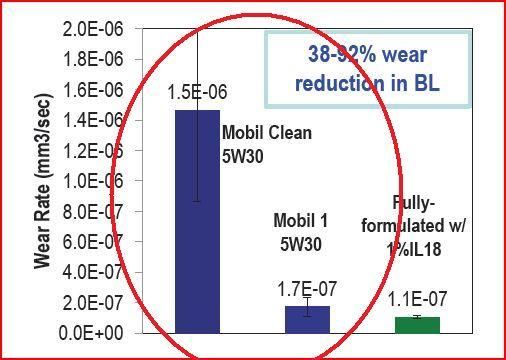Originally Posted By: kschachn
Originally Posted By: d00df00d
GTL is a process. It can be used to make a variety of things.
One of its applications is to make Group III+ base stocks.
Which then, apparently is hydrocracked before being made into a finished motor oil.
If GTL feedstocks have to be severely hydrocracked then that explains why the Pearl plant is alone.
F-T does make a pretty wide distribution of products, and makes LOTS of waxes. F-T has major heat and recycle issues that drive to special reactor designs, and then the products are severely treated. GTL gets called Grp III because that is where they reside according to chemical functionality. Since they are produced from a reaction that polymerizes CO and H, they cannot be defined as group IV (synthesized hydrocarbon, generally alpha olefin polymers) or V (generally defined as products of reactions of acids and alcohols). Keep in mind that the use of base stock group numbers has changed over time, and some have even been removed!
From the shell patent
Quote:
Suitable base oils for use in the lubricating oil composition of the present invention are Group III mineral base oils, Group IV poly-alpha olefins (PAOs) , Group III Fischer-Tropsch derived base oils and mixtures thereof.
By "Group III" and "Group IV" base oils in the present invention are meant lubricating oil base oils according to the definitions of American Petroleum Institute (API) for category III and IV. These API categories are defined in API Publication 1509, 15th Edition, Appendix E, April 2002.
Fischer-Tropsch derived base oils are known in the art. By the term "Fischer-Tropsch derived" is meant that a base oil is, or is derived from, a synthesis product of a Fischer-Tropsch process. A Fischer-Tropsch derived base oil may also be referred to as a GTL (Gas-To-Liquids) base oil. Suitable Fischer-Tropsch derived base oils that may be conveniently used as the base oil in the lubricating composition of the present invention are those as for example disclosed in EP 0 776 959, """ O "~
It's also pretty telling in terms of what they'd like vs what they can do practically to meet specs.
Quote:
There is a strong preference for using a Fischer- Tropsch derived base oil over a PAO base oil, in view of the high cost of manufacture of the PAOs. Thus, preferably, the base oil contains more than 50 wt.%, preferably more than 60 wt.%, more preferably more than 70 wt.%, even more preferably more than 80 wt.%. most preferably more than 90 wt.% Fischer-Tropsch derived base oil. In an especially preferred embodiment not more than 5 wt.%, preferably not more than 2 wt.%, of the base oil is not a Fischer-Tropsch derived base oil. It is even more preferred that 100 wt% of the base oil is based on one or more Fischer-Tropsch derived base oils. The total amount of base oil incorporated in the lubricating composition of the present invention is preferably present in an amount in the range of from 60 to 99 wt. %, more preferably in an amount in the range of from 65 to 90 wt.% and most preferably in an amount in the range of from 70 to 85 wt.%, with respect to the total weight of the lubricating composition.
So they can get away with meeting viscosity specs including 5w and 0w with a majority stake of these GTL group III bases.
http://www.google.com/patents/EP2398872A1?cl=en
F-T makes lots of waxy byproduct, due to the way plants must be run for thermal control. I've actually been part of a project in the past that was able to adjust the Anderson Schultz flory distribution by having better, innovative methods for thermal management. Those approaches are now licensed last I heard. But regardless, there is lots of post processing to get the right hydrocarbon distribution and wax management from F-T. Those processes are similar between slack wax and F-T wax, which is also likely a reason why they keep them the same.
IIRC, the GTL products are higher than the XHVI slack wax products, so likely drive the group III+ unofficial designation. Remember that vi is one of the main elements of the first three base groups.





